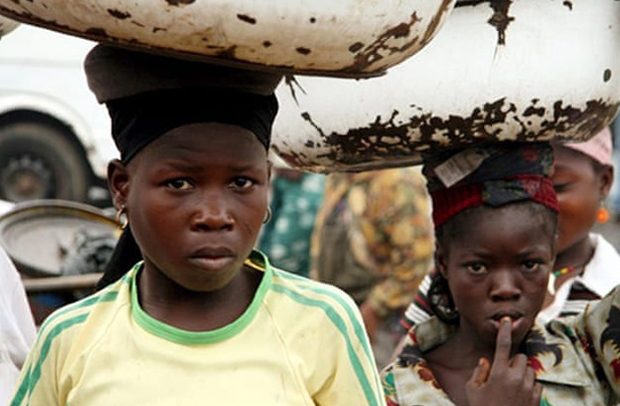Female porters are part of poor Ghanaians
Ghana Statistical Service (GSS) has indicated that based on its 2017 population projections, 6.8 million poor Ghanaians (23.4 percent) could not afford to spend GH¢4.82 per day in 2016/17 (i.e. GH¢1,760.80 per year in 2016/17).
It also said 8.2 percent of Ghanaians were extremely poor and this was based on its 2017 population projections which put the number of extremely poor Ghanaians at 2.4 million.
These came to light on Friday when the GSS launched a new report, ‘Ghana’s poverty profile’ in Accra.
It said “putting all their expenditure together, 2.4 million Ghanaians could not afford to spend GH¢2.69 per day in 2016/17 on food (summing up to GH¢982.1 per year).
Poverty reduction between 2013 and 2017 was marginal (0.8 percentage points).
“Richer regions experienced poverty reduction over a four-year period, while poorer regions did not. Greater Accra recorded the lowest poverty rate.”
The report said that the three northern regions recorded higher and rising poverty rates, adding that poorer regions also had experience rising inequality.
“Generally economic growth in Ghana has become less pro-poor, even though growth drives poverty reduction in Ghana.”
According to the survey, four poorest regions (Upper West, Northern, Upper East and Volta) also did not experience consumption growth while worsened inequality contributed to increased poverty in Northern and Upper East Regions.
It, however, noted that access to services (toilet facilities and electricity) and ownership of assets generally had increased across all regions.
Meanwhile, it mentioned that rural savannah still ranked high in poverty rates among the ecological zones, and it was the only zone that experienced increases in poverty rates in 2016/17.
Poverty declined 0.8 percentage points in 2016/17, a relatively marginal decline.
Noting that five regions experienced poverty declines, it said Northern and Upper East experienced significant increases in poverty rates.
Greater Accra had the least poverty rate, while Upper West remained the region with highest poverty rate.
Regions with rates above 30 percent in 2013 became poorer.
“26% of all poor persons in Ghana are in the Northern Region. The Northern Region has over the period contributed to poverty more than any other region.
The three northern regions contributed more than 40% to national poverty.
Poorer regions recorded higher and widening inequalities. Richer regions experienced decline in inequality.”
The report stated that Ghana has consistently been experiencing poverty reduction since the 1990s and that it achieved the MDG One of halving its poverty level in 2013.
By Samuel Boadi


